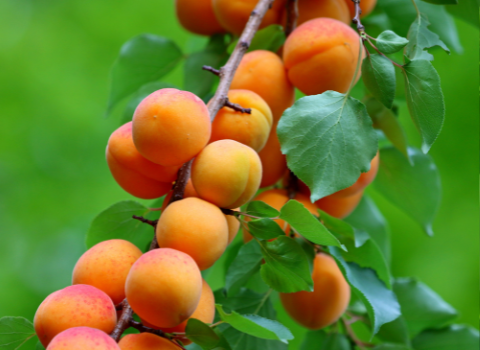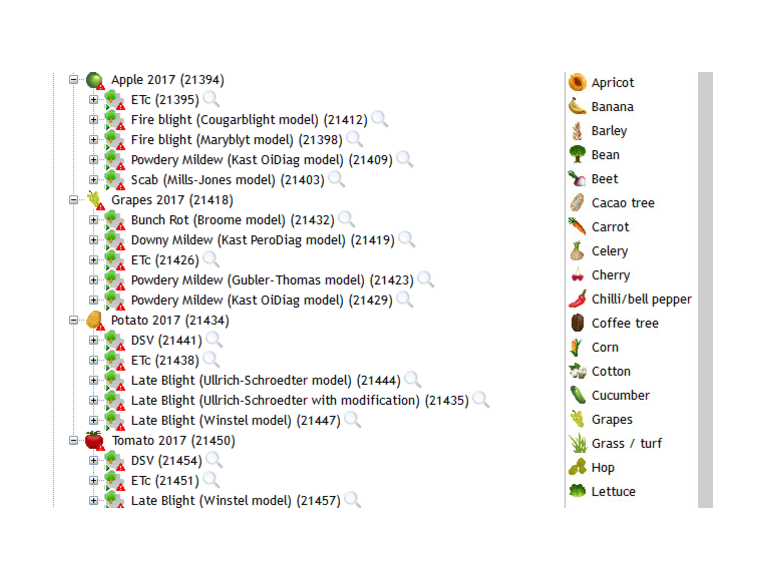
Climate is changing and farmers have to spray less due to economic and legislative reasons. Some diseases are difficult to control and the timing of fungicide application is crucial in keeping them under control.
At Pessl Instruments, we developed disease model algorithms based on environmental parameters collected from growers’ cloud-connected weather stations linked to the biology and the life cycle of over 80 different diseases to predict their development and progression in more than 45 different crops.
How do they work?
All the disease models are based on the latest research work from different scientists and measured with highly accurate sensors. c® weather stations, equipped with sensors for rain, relative humidity, leaf wetness, solar radiation, soil parameters and temperature, connected to our disease model subscription, determine risky periods for an infection in the field on an hourly basis. With this information, fungicide applications can be optimally timed.
Apricot, mirabelle, plum and prune disease models
These 4 stonefruits and their relevants can be treated similar for the models we give for Taphrina, Shot Hole, Brown Rot, Scab and Rust.
The importance of some plant diseases varies from plant to plant. Partly this is due to different resistance or susceptibility or because of different growing climates.
- APHID RISK MODEL
- XANTHOMONAS ARBORICOLA
- MONILLA SPP. ON PLUM AND APRICOT
- SHOT HOLE - Wilsonomyces carpophilus
- POWDERY MILDEW - Sphaerotheca pannosa
- TAPHRINA LEAF CURL - Taphrina deformans
- TAPHRINA PRUNI INFECTION MODEL
- STONE FRUIT SCAB MODEL - Cladosporium carpophilum
- RUST DISEASE
- CHILLING PORTIONS
- RAIN ACCUMULATION




